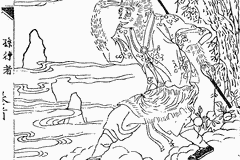The profound adventure of self-discovery and mental cultivation.
Notes taken from The Mind Illuminated.
Model of conscious experience
Conscious experience takes two different forms, attention and peripheral awareness.
Attention translates our raw experience of the world into terms we can more easily understand, which we then organize into a picture of reality. Peripheral Awareness helps us stay alert of our surroundings and to use attention as effectively as possible.Attention alayzes experience, and peripheral awareness provides the context. When one or the other doesn't do its job, we misinterpret, overreact, and make poor decisions.
| Peripheral Awareness | Attention |
| Holistic, relational, cotextual. | Isolates and analyzes. |
| Filters all incoming information. | Selects from Awareness |
| Acts as a watchful alert system. | Hones in on objects. |
| Less processing, quicker response. | More processing, slower response. |
| Less personal and more objective. | More "self" centered. |
| Introspective and Extrospective. | Introspective or Extrospective. |
The two main objectives of meditation are to work with attention and peripheral awareness to cultivate stable attention and mindfulness.
Stable Attention
The ability to direct and sustain the focus of attention and control the scope of attention.
Forming and holding specific conscious intentions leads to mental actions. Repeated mental actions become mental habits.
Reprogramming unconscious mental processes by repeating simple tasks over and over with a clear intention is the very essence of meditation.
Mindfulness
The optimum interaction between peripheral awareness and attention. It can change how you think, feel and what you say and do for the better. It enables you to change your past conditioning, to recognize your options and choose your responses wisely. Thus it allows your to take control over the direction of your live.
Most importantly, it leads to insight, wisdom and enlightenment.
sa hum

